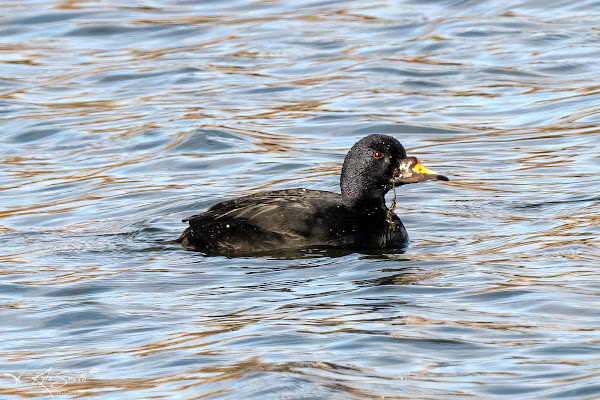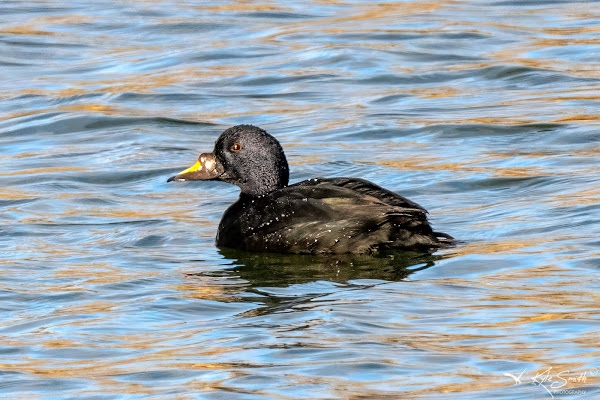The common scoter is a large sea duck characterised by its bulky shape and large bill. The male is all black with a bulbous bill which shows some yellow coloration around the nostrils. Generally, they form large tightly packed flocks on suitable coastal waters but UK breeding pairs have almost vanished and so the birds we encounter are usually winter visitors. Being coastal birds, they are not easy to see without the aid of scopes and even more difficult to photograph; it was therefore a treat to hear that one had appeared at Sixfields Reservoir in Northampton and that my friend Nick Truby had been to see it earlier on Sunday lunchtime, confirming it was still there.
After an early lunch I made for the Reservoir, which for some reason I'd never visited before, parking up in the dedicated car park. I wondered which of the North and South banks I should be on but decided I'd probably end up doing a full circuit and set off.
Shortly I met a birder coming the other way who replayed the information that the bird was still there and currently with the group of gulls on the water. It was quite muddy underfoot, but I made quick progress overtaking a couple of lady walkers before stopping at the gulls. I worked through the tufted ducks and great-crested grebes, then the area around the gulls but not a sign. I moved on to a better clearing beyond and looked back, working the water again. After a few minutes I still couldn't see it - damn. I decided to check it hadn't floated off to the eastern end of the Reservoir but struck a blank there too. I wondered what was best but decided to retrace my steps back to the gulls.
The sun started to poke through the clouds, and I could see a more bulky shape in the water but it was a false alarm - just a grebe. But then I saw a black duck returning to the surface after a dive and confirmed that this was my bird. I took a few photos but with the sun direction I would be trying to pull something out of the silhouettes. I made for the southern bank.
As I approached the right area, there were two birders watching from the eastern edge of the bushes and then relocating to the western end - I followed as the bird was heading in that direction. I dropped halfway down the bank with one of the birders and we both took some photos before the bird made its way further out towards the middle - the bird was very active, stopping only briefly between dives. I relocated to the east of the bushes again, but the bird didn't want to get any closer and then it turned and made for the west again. It then dropped from view and as another birder arrived, it went awol. Not sure where it was hiding but I left him searching as he had seen it but not yet taken a photo. Yet another birder joined the search.
Such good views compared with those looking offshore and lucky an individual had found its way to a body of water close to home.




No comments:
Post a Comment